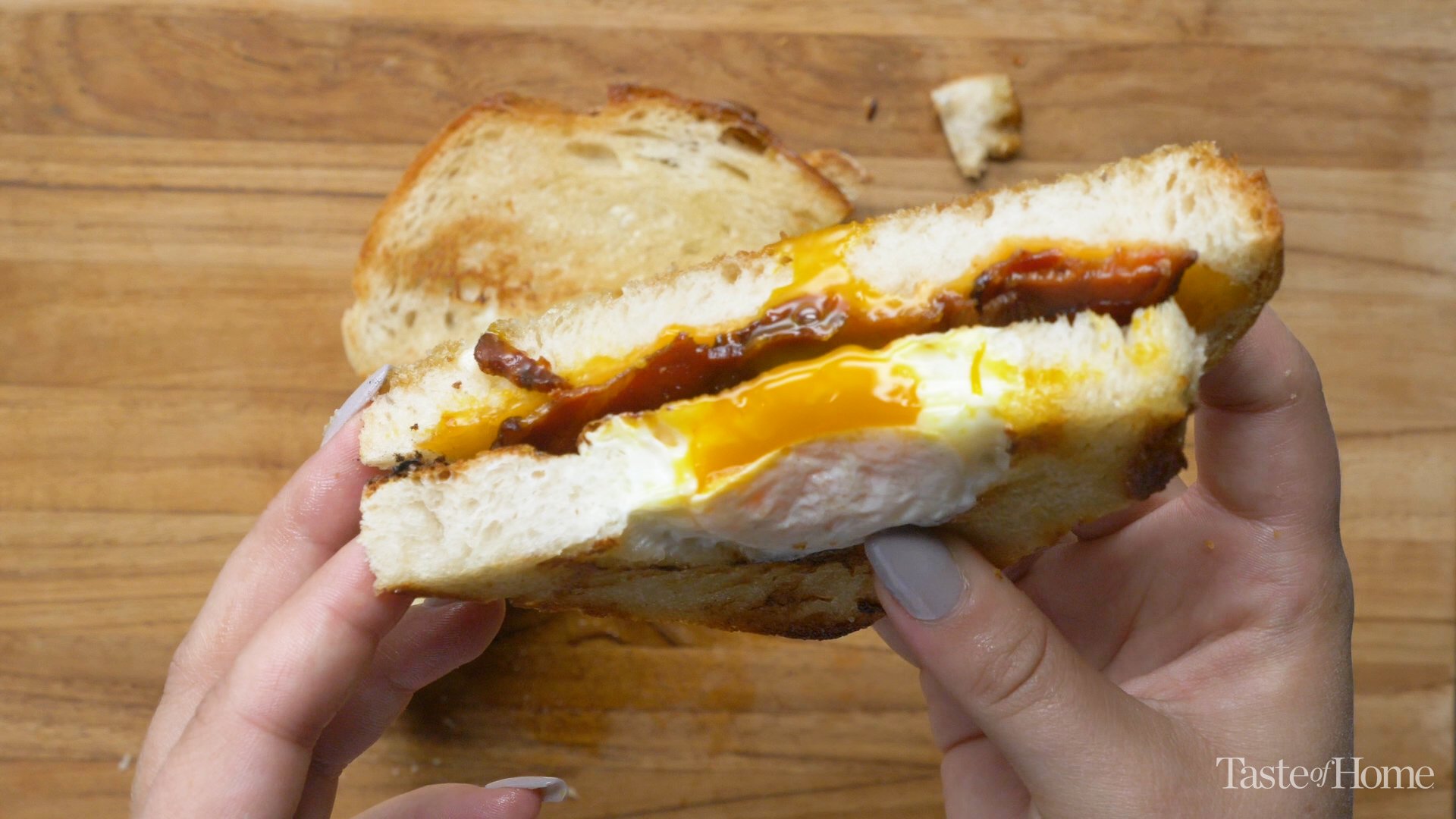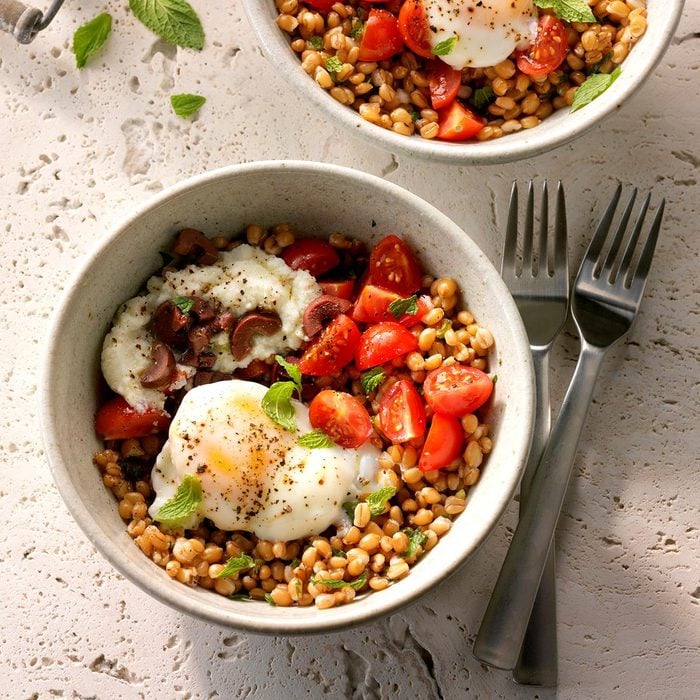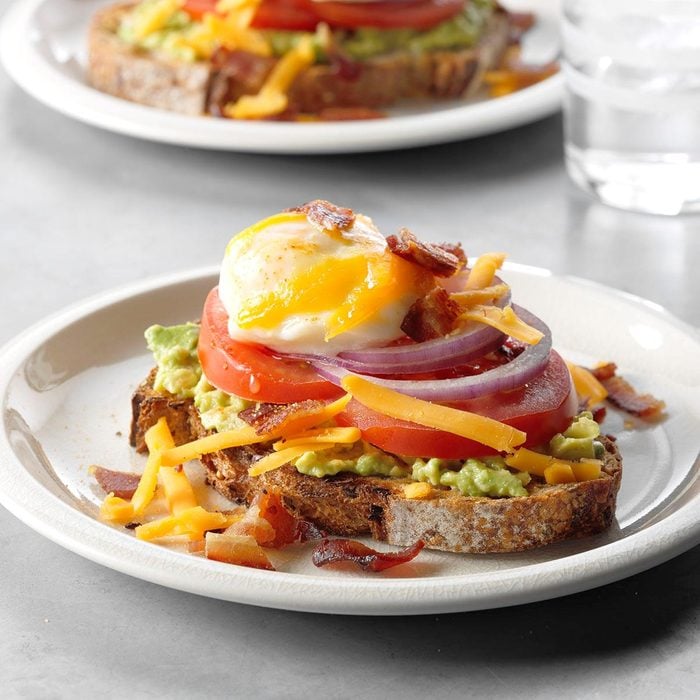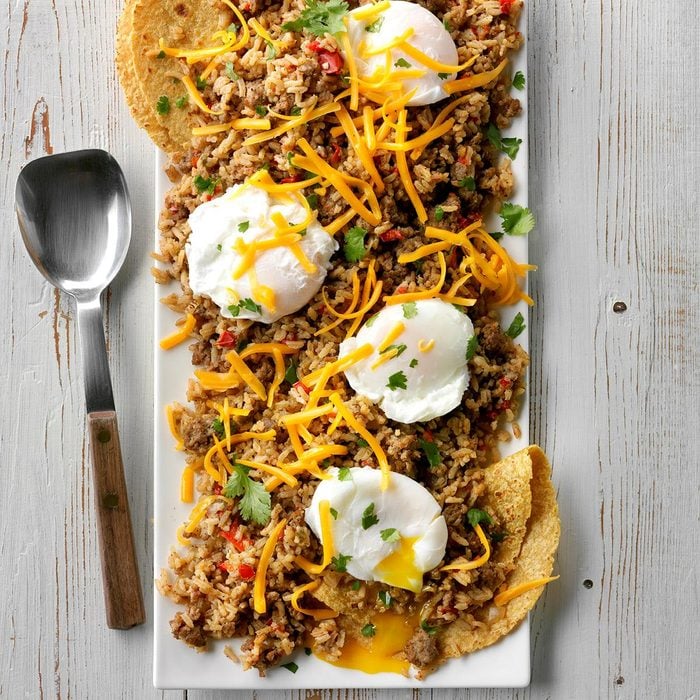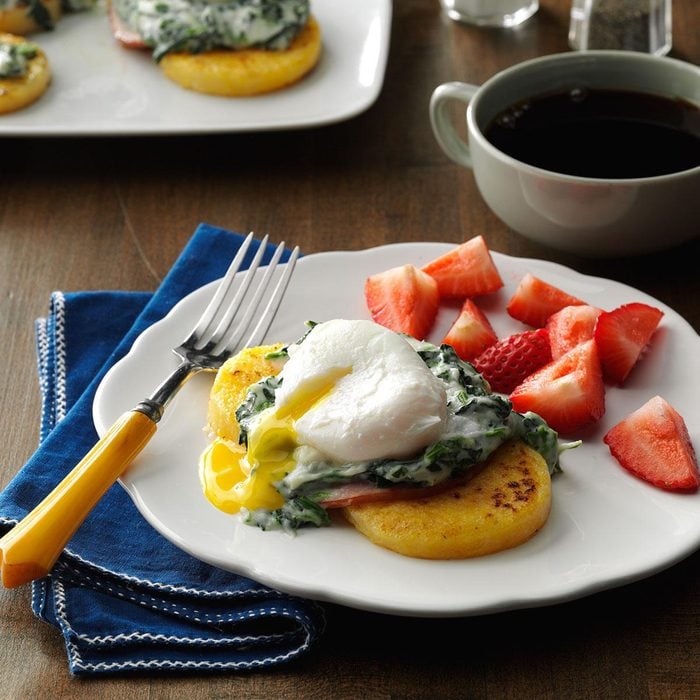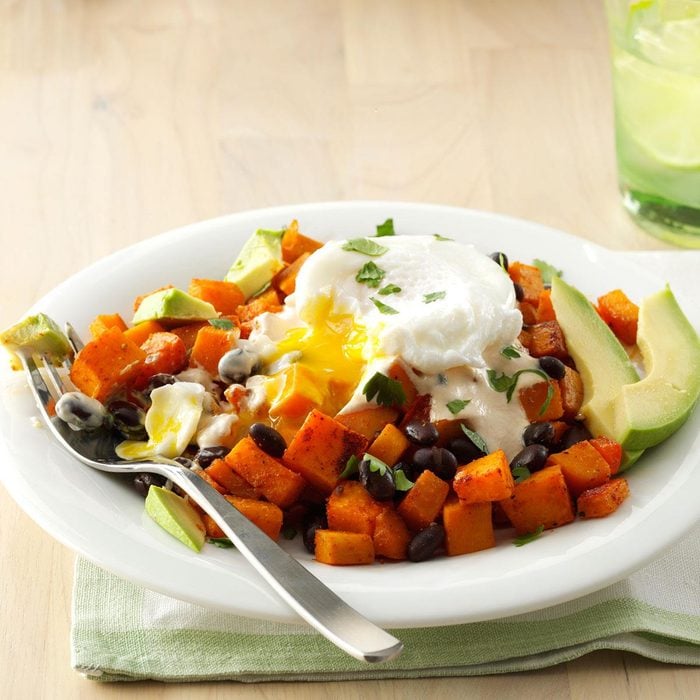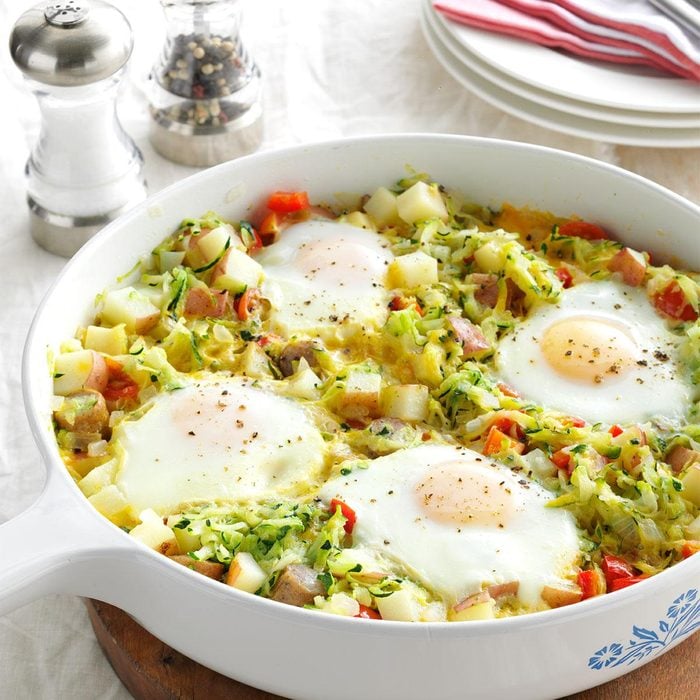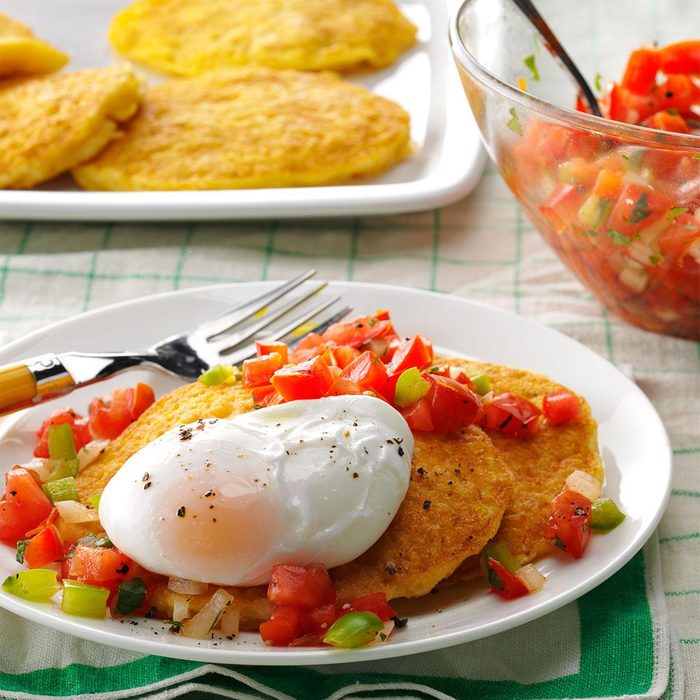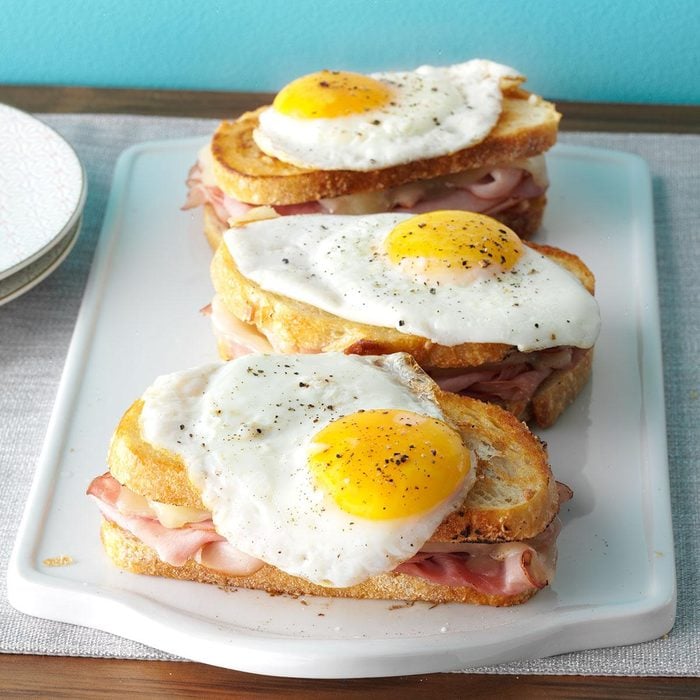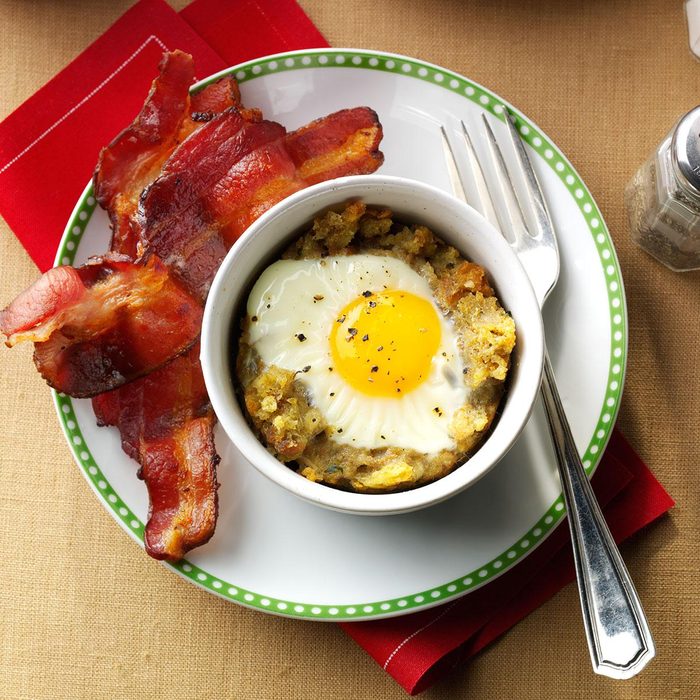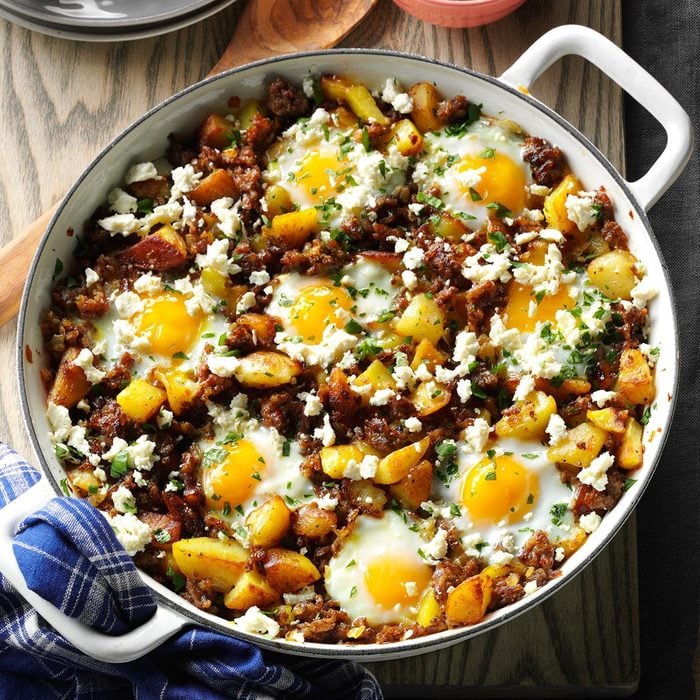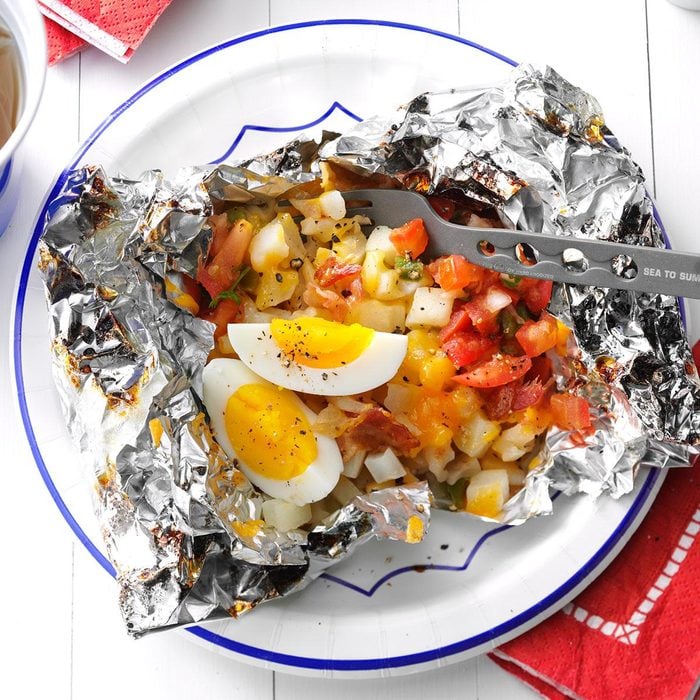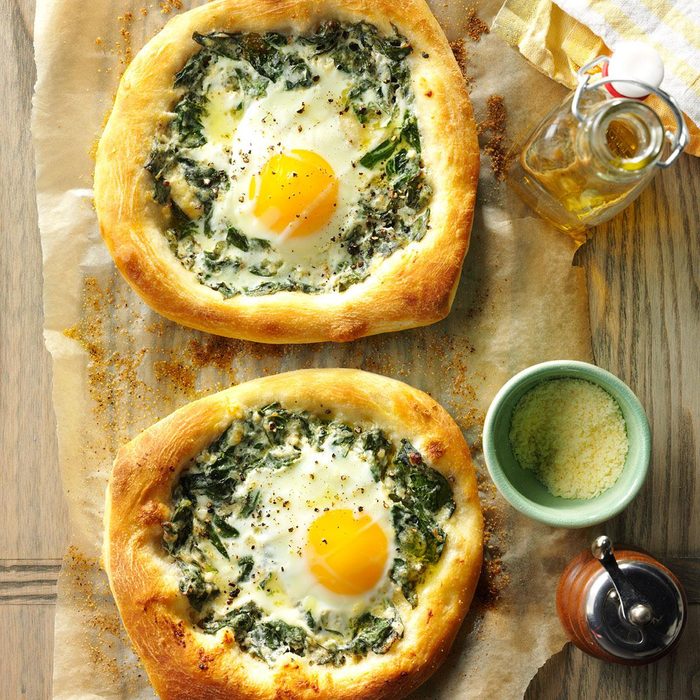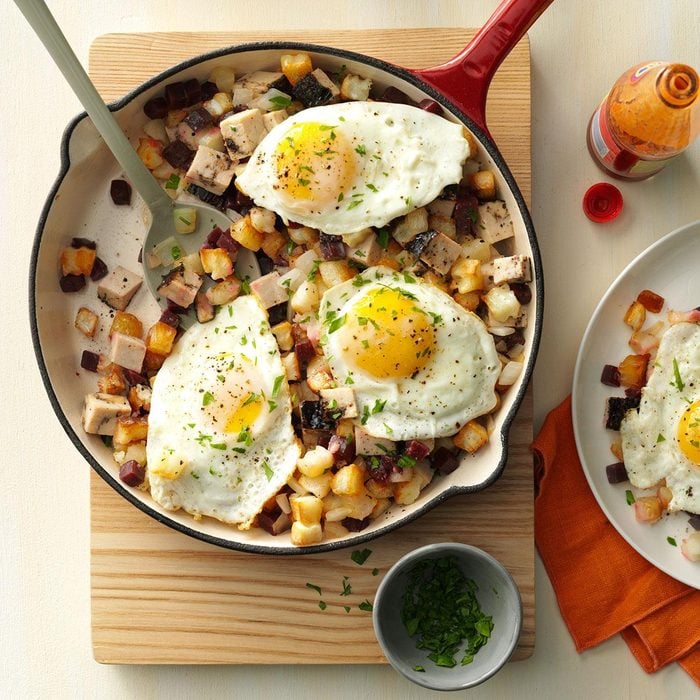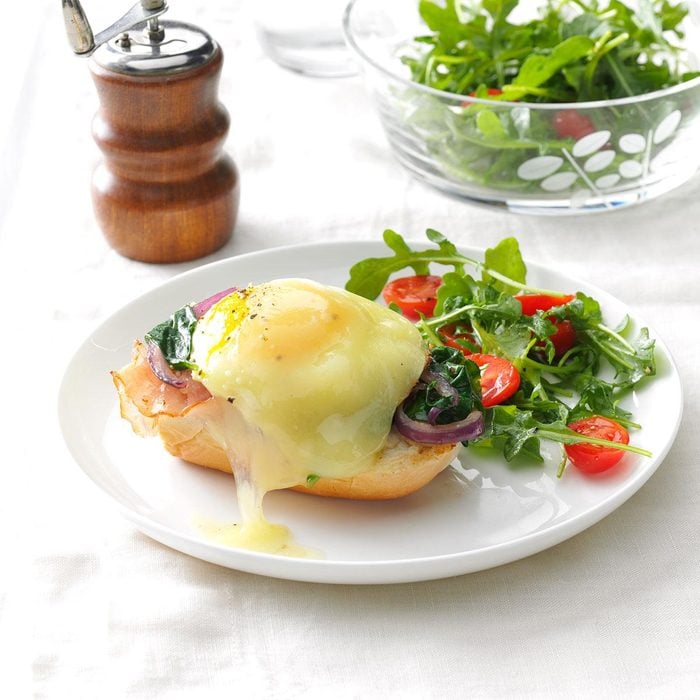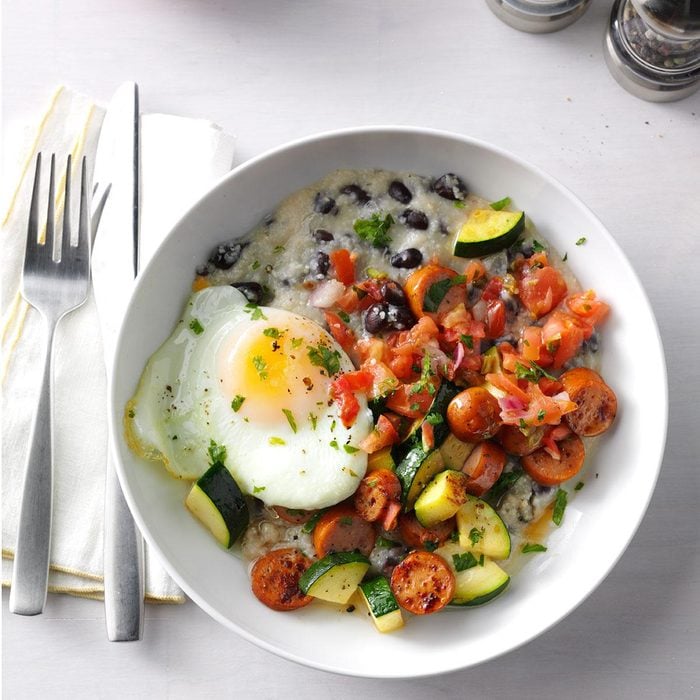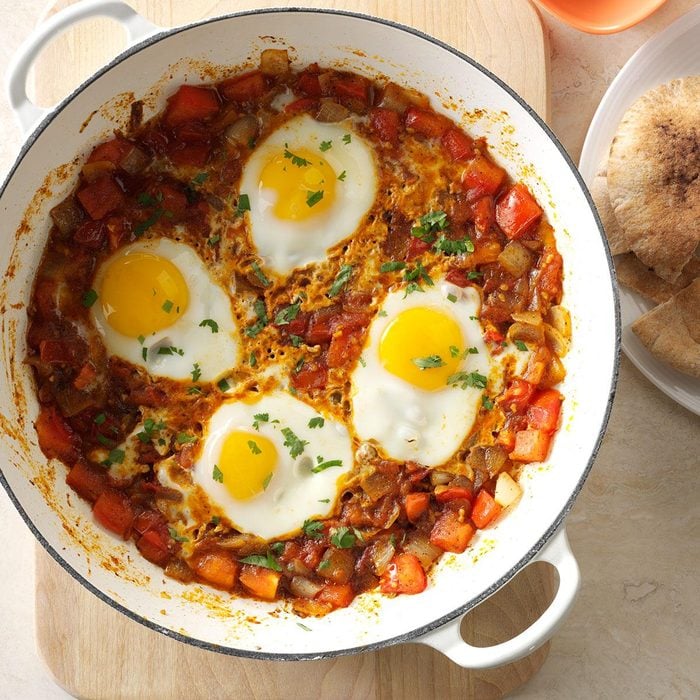Every Way to Cook an Egg
Updated: Jan. 03, 2024

From sunny-side-up eggs to fluffy omelets, here are the best ways to cook eggs so they come out perfectly every time.
The best egg recipes can turn into your favorite breakfast, lunch or dinner—if they’re cooked well, that is. Here’s how the Taste of Home Test Kitchen gets all the basic ways to cook eggs right every time. Follow these methods and you’ll never have green yolks or runny whites again.
1. How to Boil Eggs
Not only are hard-boiled eggs delicious (and convenient!) on their own, but they also lead to deviled egg recipes and classic egg salad. There are quite a few ways to boil eggs—you can make Instant Pot hard-boiled eggs, pressure cooker hard-boiled eggs, air fryer hard-boiled eggs, slow cooker hard-boiled eggs, hard-boiled eggs in the oven, and, of course, on the stovetop, which is the method we’ll go over here. Check our easy techniques for how to boil eggs which will make you an eggs expert in no time.
Test Kitchen Tip: Using older eggs is better for hard-boiled eggs, because it makes them easier to peel later on. Not sure how long your eggs have been sitting in the refrigerator? Try doing the float test to check if your eggs are fresh before you start.

Step 1: Remove the eggs from the fridge 30 minutes before cooking to prevent cracking.
Step 2: Place the eggs in a single layer in a large saucepan; add enough cold water to cover by 1 inch. Bring the eggs to a boil over high heat.
Step 3: As soon as the water reaches a rolling boil, immediately remove the pan from the heat and cover. The residual heat in the water cooks the eggs. Set a timer for 15 minutes for extra-large eggs, 12 for large and 9 for medium. If you want to soft boil your eggs, that’s 6 minutes.
Step 4: Drain; shake the pan gently to crack the eggshells all over.
Step 5: Immediately submerge the eggs in ice water and set them aside to cool. Unpeeled hard-cooked eggs will keep in the fridge for up to one week. If peeled, store covered in cool water in the fridge for three to four days.
Step 6: Peel the eggs starting from the large, rounded end under cool running water, or try one of these other methods for how to peel a hard-boiled egg. Then pop them into a recipe like BLT Chicken Salad or Mom’s Super Stupendous Potato Salad.
Test Kitchen Tip: Used to seeing green around your yolks? You’ve been cooking your eggs too long.
2. How to Poach Eggs
Love eggs Benedict recipes? Learn the best way to poach an egg. And when it comes to the hollandaise sauce, the quality of your eggs is important—try it with pasture-raised eggs. Here’s more about the best eggs to buy for all the different ways to cook eggs.

Step 1: Add 2 to 3 inches of water to a large saucepan or deep skillet and bring to a boil. Lower the heat to the point where the water barely bubbles.
Step 2: Break the eggs, one at a time, into small ramekins or tea cups. Resist the temptation to crack the eggs directly into the water. While we’re confident in your egg-cracking skills, skipping this step causes the egg to separate in the water—one of the mistakes you might be making with eggs.
Step 3: Give the water a gentle swirl. Holding the cup close to the surface, slide the egg into the water.
Step 4: Cook the egg until the whites are completely set and the yolks are still soft, 3 to 5 minutes. Take care not to stir.
Step 5: With a slotted spoon, gently lift the egg from the water and let drain.
Test Kitchen Tip: When making poached eggs to top toasted bread (or polenta, like we did above), lift the eggs from the water with a slotted spoon and place on paper towels, still on the spoon, to drain.
3. How to Scramble Eggs
Scrambled is one of the most classic ways to cook an egg. The key here is to avoid rubbery or runny eggs(Here is how you can make boiled scrambled eggs!). Follow our directions for how to make scrambled eggs. and once you get the hang of it, try some of the endless ways to customize them (start with these new ways to eat scrambled eggs).

Step 1: Crack the eggs into a bowl. Whisk them with a pinch of salt and pepper.
Step 2: In a large nonstick skillet, melt butter over medium heat. Pour in the egg mixture.
Step 3: Let the eggs cook for about 30 seconds, or until the bottom starts to set, before you stir. Gently pull them across the pan with an inverted spatula or wooden spoon, forming large soft curds.
Step 4: Continue lifting and folding the eggs until the mixture has thickened and almost no visible liquid remains. The eggs will continue cooking when they’re off the heat, so you want that little bit of liquid when you take them out of the pan. Voila! Fluffy scrambled eggs.
We are sure that you guys want to know how Gordon Ramsay makes his scrambled eggs. Here is Gordon Ramsay’s scrambled eggs recipe, and see what we think about it!
Test Kitchen Tip: For the creamiest results, stir a pat or two of soft butter into the eggs halfway through cooking.
4. How to Fry Eggs
There are so many ways to fry an egg, whether you’re whipping up a quick breakfast or topping your burger with a perfectly runny fried egg.

How to Make a Sunny-Side Up Egg
You can put a sunny-side up egg on anything if you’re brave enough! Some of our favorite dishes with sunny side eggs are huevos rancheros or a hearty breakfast pizza. Sunny-side up eggs are a great addition to savory waffle recipes, too.
Step 1: Melt a tablespoon of butter over medium heat in a large nonstick pan.
Step 2: When the butter is melted, reduce the heat to low and crack your eggs into the pan.
Step 3: Swirl the eggs in the pan when the whites are completely set. You’ll know they’re done once they release easily from the bottom. No need to flip!
Test Kitchen Tip: Don’t worry about the white stuff in an egg when you’re cracking your eggs into the pan. It’s safe to eat.
How to Baste an Egg
If you’re nervous about breaking the yolk when you flip it, this method is for you. To make basted eggs, make sure you have enough melted butter in your pan.
Step 1: Begin cooking your eggs just as you would for sunny-side up eggs.
Step 2: As the eggs cook in the pan, slowly spoon the melted butter back over the top of the eggs.
Step 3: You’ll know your basted egg is ready when the egg whites are opaque and firm. Serve basted eggs with toast to soak up that buttery egg yolk.
Test Kitchen Tip: It’s a common misconception that egg whites are healthier than whole eggs. Yolks provide nutrients like vitamins B12 and D that you won’t get from egg whites alone.
How to Cook Eggs Over Easy
Over-easy eggs are basically sunny-side up eggs that you have to flip. They’re a great addition to breakfast BLTs and plenty of other sandwiches, and quick to cook.
Step 1: Follow the directions for sunny-side up eggs. But, instead of taking the eggs out of the pan, flip them over and cook for about 30 seconds.
Step 2: Test to see if the egg is done by shaking the pan: The yolk should still be jiggly, but the egg white should be firm.
Step 3: Remove from the pan and enjoy!
How to Cook Eggs Over Medium
Over-medium eggs are a little trickier because you’re trying to nail the balance between a runny and a firm yolk.
Step 1: Follow the method for how to cook over-easy eggs. After flipping the eggs in the pan, cook for 1 minute.
Step 2: Test to see if the eggs are done by gently poking the yolks with your finger. The yolk should be a little firm, but still have some jiggle.
Step 3: Serve!
How to Cook Eggs Over Hard
People who don’t want a runny yolk but still want a fried egg will love over-hard eggs, because they have firm, fully cooked yolks.
Step 1: As above, you’ll start by following the method for over-easy eggs. After flipping the eggs in the pan, cook for 2 to 3 minutes.
Step 2: Remove from the pan and serve—perhaps alongside some crispy breakfast potatoes?
That’s every way to make fried eggs!
Test Kitchen Tip: If you’re short on time, you can shorten the cooking time for over-hard eggs by breaking the yolk intentionally before you flip it—though it won’t have quite the same texture as with the yolk intact.
5. How to Make an Omelet
The filling combinations for omelets are endless. Try one of these omelet recipes when you’re fresh out of ideas—but not out of eggs! If you prefer using an omelet maker, here are some other egg tools you might like.

Step 1: Precook the filling ingredients before you start your eggs. Plan on 1/3 to 1/2 cup filling per two-egg omelet, like this Cream Cheese & Chive Omelet.
Step 2: Crack the eggs into a bowl. Whisk or beat together 1 tablespoon of water per egg with a pinch of salt and pepper.
Step 3: Melt butter in a nonstick skillet over medium-high heat until hot and foamy. Tilt the pan to ensure the entire bottom is coated with butter.
Step 4: Add the egg mixture to the skillet. It should set immediately at the edges. As the eggs start to set, push the cooked edges toward the center, letting the uncooked portion flow underneath. Repeat until the eggs are fully set and there’s no visible liquid.
Step 5: Spoon your filling on top of one side; fold the other side over the filling and cook to your desired doneness. Slide the omelet onto a plate.
Test Kitchen Tip: An 8- or 10-inch nonstick slope-sided skillet with a slippery-smooth surface and slightly thick base that distributes heat evenly is what we reach for when making omelets and frying eggs in the Test Kitchen. We’re not omelet-biased here: They also make short work of grilled cheese sandwiches and quesadillas.





















